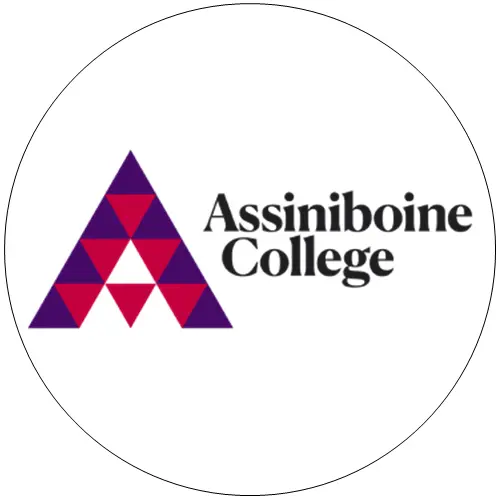• Study in Canada
Public Transportation in Canada for International students
2657 Reads
3 min Read
- International students can save a lot of money while studying in Canada by using public transportation.
- The average cost of public transport in Canada is 105 CAD per month.
- The best Canadian city for public transport is Montreal.
- Buses are the most popular transportation in Canada.
Travelling will be an everyday experience for an international student while studying in Canada. That is why it's essential to figure out the public transportation system in Canada earlier. Along with saving money students also want to ensure their safety while travelling in Canada. Moreover, public transportation in Canada varies from city to city. All these things demand a dedicated blog that can solve these queries. Here is one which will help you explore all aspects of public transport in Canada for international students.
Benefits of Public Transport in Canada
| Cost Effective | Public transportation is a cost-effective and eco-friendly alternative to owning a personal vehicle. Students can reduce transportation expenses by opting for buses, trains, or subways while contributing to a cleaner environment by reducing their carbon footprint. With Canada's increased cost of living, public transport is the best option to reduce financial burden. |
| Environment-Friendly | Public transportation is eco-friendlier than cars, as it reduces carbon emissions per passenger. Using buses, trains, or subways can help reduce carbon footprint. |
| Time-Saving | Students can make the most of their travel time by using public transportation to read, study or catch up on assignments. |
| Health Benefits | Walking to transit promotes physical activity, benefiting cardiovascular health. Reducing car use mitigates air pollution and sedentary lifestyles. |
| Quality of life | Public transit improves quality of life by providing reliable, convenient, and affordable transportation options, freeing time for leisure and family activities. |
| Community Cohesion | Public transportation brings people from diverse backgrounds together, fostering community and reducing social isolation, particularly for marginalised groups. |
Public Transport System in Canada
| Public Transport | Description |
| Buses | Buses are the most widely available public transport in Canada and are available for both within cities and intercity travel. For students' convenience, buses have air conditioners and washrooms. It is one of the cheapest ways to travel in Canada. Greyhound and its partners run the largest network of buses in Canada, and students can book tickets by calling. |
| Subway and Light Rail Systems | Cities like Toronto, Vancouver, and Montreal have subway and light rail systems, which are efficient public transport in Canada. Besides being efficient, these also provide extensive coverage. |
| Trains | The next public transport option in Canada is trains, which are available at regional and national levels. Trains are one of the most convenient ways of transportation for longer routes. International students can avail of student discounts and passes while travelling on trains. |
| Ferries | Students who want to explore coastal areas and nearby islands can use ferry services. This public transport in Canada connects different islands. |
Public Transportation (City-Wise) in Canada
| City | Transport Types |
| Calgary | CTrain (light rail transit), Buses, and Community Shuttle Services |
| Edmonton | LRT (Light Rail Transit), Buses, and a Bike-Sharing Program |
| Halifax | Ferries, Buses, and a Bike-Sharing Program |
| Montreal | Metro, Buses, Commuter Trains, and BIXI Bike-sharing |
| Ottawa | O-Train (Light Rail Transit), Buses, and a Bike-Sharing Program |
| Quebec City | RTC (Réseau De Transport De La Capitale) Buses and Bike-Sharing Program |
| Toronto | Subway, Streetcars, Buses, and GO Transit |
| Vancouver | Sky Train, Sea Bus, West Coast Express, Buses, and Ferries |
| Victoria | British Columbia (BC) Transit Buses, Ferries, and a Bike-Sharing Program |
| Winnipeg | Winnipeg Transit Buses and a Bike-Sharing Program |
Apart from cities, popular provinces in Canada also have different transport systems in one way or another. Let’s find out how:
- Alberta: In Western Canada, Alberta offers bus and light rail services in cities like Calgary and Edmonton. Cycling is a popular option in Alberta, especially during the summer months. Calgary has many universities which offer bike-sharing programs to international students.
- British Columbia: Public transit options in British Columbia are available in major cities such as Vancouver, Victoria, and Kelowna. The province is also a major transport hub between Asia Pacific and North America. Cycling is one of the popular and eco-friendly options in British Columbia. Moreover, Vancouver has an extensive network of bike lanes and trails. Further, many universities offer bike-sharing programs where students can rent a bike for a low cost.
- Manitoba: Manitoba provides many public transportation options for international students. Winnipeg, the capital city of Manitoba, is also the primary transportation hub, as it has Winnipeg James Armstrong Richardson International Airport and a Winnipeg Bus Terminal that provide easy access to the city.
- Ontario: Ontario, which consists of cities like Toronto, Ottawa, and Hamilton, provides a variety of public transportation in Canada. It has the Toronto Transit Commission, which provides a reliable service throughout the Greater Toronto Area (GTA). International students can get discounted monthly passes to reduce transportation costs. The next option is GO Transit, which connects GTA to other regions of Ontario. It has various ticket options, like single-ride tickets, day passes, and monthly passes.
- Quebec: Quebec, the largest province in Canada, provides many public transportation options. The Société de transport de Montréal (STM) is the primary public transit system in the province, operating buses and a metro system in Montreal. It is the second busiest metro system in Montreal, comprising 68 stations. Students can get their monthly pass at a discounted rate and use this public transportation in Canada.
Public Transport Discounts & Passes for Students in Canada
| Student Transit Passes | Many cities in Canada offer discounts exclusively to international students. With these passes, students can travel unlimited for a specific period of time at a reduced price. |
| Student Presto Card | The Student Presto Card is a convenient and reloadable payment card for public transportation in some specific regions. International students can get this card at a discounted rate when using public transport in Canada. |
| International Student Identity Card (ISIC) | The ISIC is a globally recognised card that provides various discounts and benefits, such as discounted transportation fares. International students can obtain this card to take advantage of these discounts. |
Public Transport Safety Tips for Students in Canada
| Stay Informed | Travel during off-peak hours: It's best to avoid travelling during rush hours when public transportation in Canada is typically more crowded. Opting for off-peak times can help reduce congestion, making students' journeys more comfortable and safe. |
| Be aware of your surroundings | When waiting at bus stops, train stations, or transit terminals, it is important to remain attentive and alert. Students must avoid distractions like using their phones excessively or wearing headphones at high volume, as these can make them less aware of potential hazards. |
| Use well-lit stops | When students are waiting for public transportation, it's recommended that they choose stops or stations that are well-lit, especially if they're travelling during the evening or night. They should stand in visible areas and avoid secluded or poorly lit areas where safety risks may be higher. |
| Respect social distancing | When social distancing is recommended or required, such as during the COVID-19 pandemic, it is important to keep a safe distance from other passengers. Students must be mindful of their surroundings and maintain a safe distance to protect themselves and those around them. |
Cost of Public Transport in Canada
| City | Single Fair (Adult) | Multiple Fair (Adult) |
| Calgary (Calgary Transit) | CAD 3.60 | CAD 112.00 |
| Edmonton (Edmonton Transit) | CAD 3.50 | CAD 100.00 |
| Toronto (TTC) | CAD 3.35 | CAD 156.00 |
| Montreal (STM) | CAD 3.75 | CAD 97.00 |
| Ottawa (OC Transpo) | CAD 3.85 | CAD 128.75 |
| Vancouver (TransLink) | (Depends on Zone) Starts at CAD 3.25 | (1-Zone) CAD 104.90 |
| Winnipeg (Winnipeg Transit) | CAD 3.15 | CAD 107.80 |
Note: The above figures are just estimates and are subject to change.
Conclusion
FAQ
Get great articles direct to your inbox
The latest news, articles, and resources, sent straight to your inbox every month.
Popular Universities to Study Abroad
World class education waiting for you.

Assiniboine Community College - North Hill Campus (Brandon)
Manitoba, Canada • 10 Programmes
Tuition Fee : CAD 16000-21000 / year

Health Careers International (HCI) Group - Institute of Health and Nursing Australia (IHNA) - Perth Campus
Western Australia, Australia • 1 Programmes
Tuition Fee : AUD 7500-8000 / year

Central Queensland University - Brisbane Campus
Queensland, Australia • 39 Programmes
Tuition Fee : AUD 31000-38000 / year

-modified-(1)-(1).webp)
Trent University - Durham GTA Advanced Learning Center
Ontario, Canada • 7 Programmes
Tuition Fee : CAD 22000-23000 / year

International School of Management - Berlin Campus
Berlin, Germany • 23 Programmes
Tuition Fee : EUR 11400-11400 / year

University of Chester - Exton Park (Parkgate Road)
England, UK • 133 Programmes
Tuition Fee : GBP 12950-12950 / year

Anglia Ruskin University - Peterborough Campus
England, UK • 13 Programmes
Tuition Fee : GBP 13000-17000 / year
Popular English Language Proficiency Exams
Blogs and Articles
Curated content to keep you updated on the latest education trends, news and more.
ACT vs. SAT: Which One to Choose?
Updated on • Apr 12,2025 05:40 PM IST • Study Abroad
Updated on • Apr 11,2025 05:53 PM IST • IELTS
Backlog Certificate: A Complete Guide
Updated on • Apr 11,2025 01:47 PM IST • Study Abroad Guidance
PTE Score Chart 2025: PTE Exam Scoring System & Calculation
Updated on • Apr 09,2025 05:37 PM IST • PTE
Master's in Computer Science in the USA
Updated on • Apr 08,2025 05:59 PM IST • USA
Top Trending MBA Specialisations in 2025
Updated on • Apr 08,2025 04:47 PM IST • Study Abroad
Describe Your Hometown IELTS Speaking Part 1 Topic
Updated on • Apr 07,2025 05:50 PM IST • IELTS
How to Get a Job in USA in 2025
Updated on • Apr 07,2025 03:19 PM IST • USA
Highest Paying Jobs in the World
Updated on • Apr 01,2025 05:31 PM IST • Study Abroad
Student Life in Ireland in 2025
Updated on • Mar 29,2025 05:50 PM IST • Ireland
Top Public Universities in Germany
Updated on • Mar 26,2025 04:33 PM IST • Germany
Top Universities for Masters in Ireland in 2025
Updated on • Mar 25,2025 04:36 PM IST • Ireland
Cost of Living in Singapore for Indian Students in 2025
Updated on • Mar 22,2025 11:57 AM IST • Singapore
PTE vs IELTS : Know the Difference and Which is Easier?
Updated on • Mar 21,2025 03:38 PM IST • IELTS
Updated on • Mar 20,2025 10:19 AM IST • Germany
Updated on • Mar 12,2025 11:20 AM IST • Ireland
Updated on • Mar 11,2025 01:18 PM IST • USA
Best Countries to Study Abroad for Indian Students in 2025
Updated on • Mar 08,2025 01:24 PM IST • Study Abroad
Updated on • Mar 05,2025 12:19 PM IST • UK
Fastest Growing Job Sectors in Germany in 2025
Updated on • Feb 28,2025 04:04 PM IST • Germany
Related Blogs and Articles
A little effort to provide an authentic and reliable content for keen readers!!
Updated on • 25-01-2025 • Study in Canada
Updated on • 24-01-2025 • Study in Canada
Canada Student Visa Interview Questions
Updated on • 23-01-2025 • Study in Canada
Updated on • 15-01-2025 • Study in Canada
September/Fall Intake Canada 2025: Timeline, Universities & Admission Requirements
Updated on • 03-01-2025 • Study in Canada
Updated on • 02-01-2025 • Study in Canada
Life in Canada as an Indian Student
Updated on • 26-12-2024 • Study in Canada
Timeline for Winter (January) Intake in Canada 2025
Updated on • 21-12-2024 • Study in Canada
Updated on • 05-12-2024 • Study in Canada
Best Cities to Study in Canada
Updated on • 21-11-2024 • Study in Canada
Bachelor of Architecture in Canada
Updated on • 13-11-2024 • Study in Canada
Job Opportunities in Canada for Indians: Salaries, Best Job Sites & More
Updated on • 09-10-2024 • Study in Canada
Canada Study Visa - Fee, Requirements, How to Apply & More
Updated on • 05-10-2024 • Study in Canada
Study intakes in Canada - Fall, Winter & Summer
Updated on • 03-10-2024 • Study in Canada
Letter of Recommendation (LOR) for Canada: University Requirements, Sample and Writing Tips
Updated on • 26-09-2024 • Study in Canada
New Rules & Regulations in Canada for International Students
Updated on • 31-08-2024 • Study in Canada
Healthcare in Canada for international students
Updated on • 27-08-2024 • Study in Canada
Courses in Canada for International Students
Updated on • 10-08-2024 • Study in Canada
Top PG diploma Colleges in Canada - Courses, Eligibility & More
Updated on • 06-08-2024 • Study in Canada
Pros & Cons of Studying in Canada
Updated on • 31-07-2024 • Study in Canada











